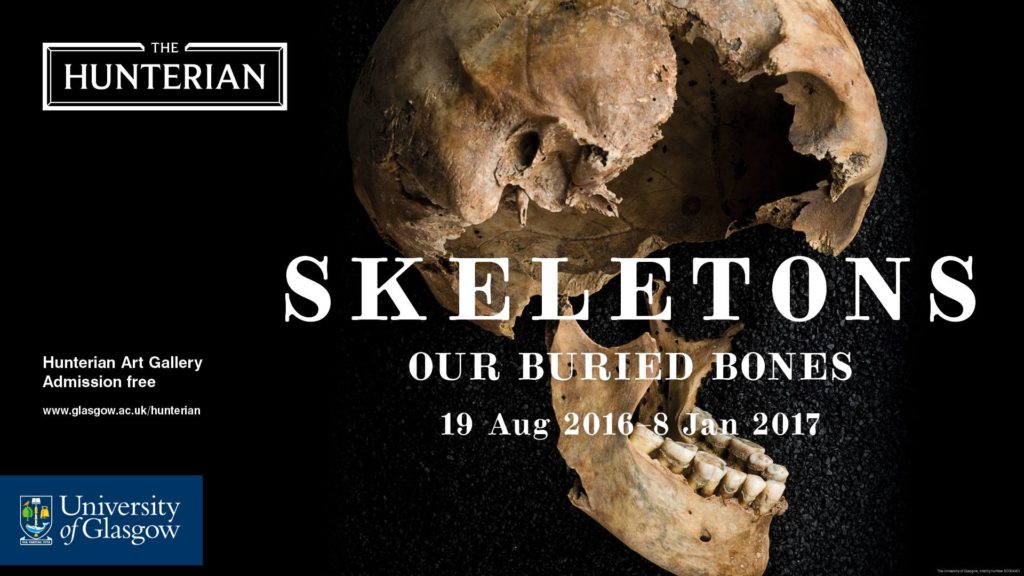This special exhibition unearths the stories behind four skeletons from the Museum of London’s 20,000-strong collection and four from burial grounds across Scotland. This is a touring exhibition that, after Glasgow, will travel to Bristol and Leeds in 2017, displaying the Museum of London’s skeletons alongside bones discovered locally. In-depth analysis by experts at the Museum of London has provided insights into the health and history of each individual, helping to bring to life the stories that have long been hidden beneath the ground.

The skeletons on display in Glasgow reflect a rich and varied past, with individuals coming from diverse locations, both geographically and socially, and periods of time. Excavations have uncovered burial grounds across the UK, ranging from the Neolithic period through the Iron Age to Roman London and up to the 19th century. Each individual skeleton reveals aspects of their life and times, including fractures and trauma, multiple myeloma – cancer, the effects of syphilis, rickets or arthritis, and tooth decay.
Emily Sargent, curator at Wellcome Collection, said: “Spanning thousands of years and from opposite ends of the country and social scales, the bones of these individuals offer us a rare and special glimpse into history. Yet we identify with their rotten teeth or broken bones, and are reminded that skeletons can tell us more about what people lived with, rather than what they died from.”
Sharon Ament, Director of the Museum of London, said: “This is the first time our skeletons have gone on tour and really shows how museums at opposite ends of the UK can work together to show their joint collections. We can learn a lot from the bones of our ancestors, who all lived through very different versions of the London we know today, and this is a wonderful opportunity to share their stories alongside those of their local Scottish counterparts for the first time.”
Research carried out on the skeletons has helped shed new light on the grounds they were discovered in and the circumstances in which they were buried, from plague pits in urban London to the beaches of South Uist. Specially commissioned photographs by photographer Thomas Adank capture the sites as they are now, and will be displayed in the exhibition next to each skeleton, contextualising them as a reminder of the layers of human history all around us.
Jelena Bekvalac, Curator of Human Osteology at the Museum of London, said: “Research carried out on these skeletons has given us vital clues into the lives of these individuals, some of whom lived thousands of years ago. Putting them in context with where they were buried and what those sites look like now will mean visitors will have a real, tangible connection to these people. It is a unique opportunity for the skeletons from London to be displayed in Glasgow alongside their Scottish counterparts, and truly demonstrates the rich diversity of burial in the British Isles.”
Professor David Gaimster, Director of The Hunterian, added: “We are delighted to be working in partnership with Wellcome Collection and the Museum of London on this fascinating exhibition. ‘Skeletons: Our Buried Bones’ offers a unique insight into the way people lived, worked and died.”
‘Skeletons: Our Buried Bones’ is a collaboration between Wellcome Collection and Museum of London, touring to Glasgow, Bristol and Leeds over 2016-2018. It’s based on ‘Skeletons: London’s Buried Bones’, originally shown at Wellcome Collection in 2008 and is curated by Emily Sargent and Jelena Bekvalac.
Source: The Hunterian Museum [August 18, 2016]